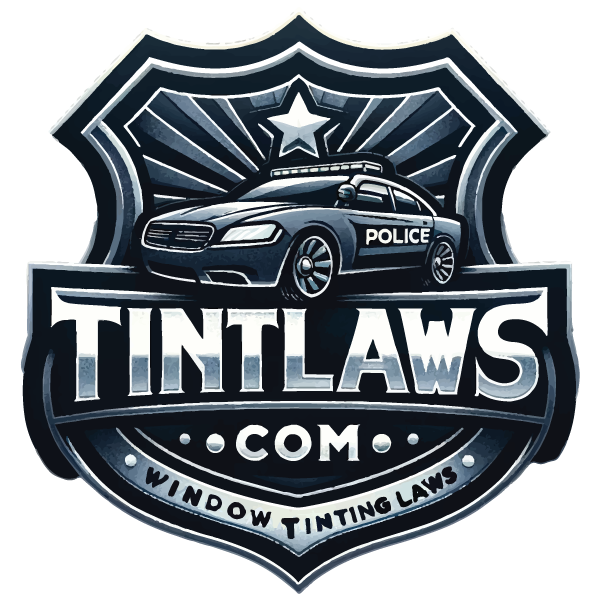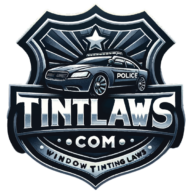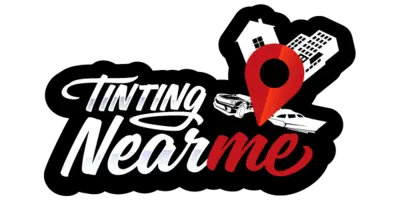2024 Washington Legal Tint Laws Explained
Did you know that approximately 73% of vehicles in Washington have some form of window tinting? With the 2024 Washington Legal Tint Laws in effect, understanding these regulations has become crucial for vehicle owners. If you’re one of the many who’ve chosen to tint your windows, you’ll need to ensure you’re within the law’s parameters, which cover everything from the tint’s darkness to its reflectivity and color. And that’s not all – there are certain exemptions and guidelines manufacturers must follow, too. Intrigued about the specifics? Let’s journey together into the intricacies of these laws.
The information on tintlaws.com isn’t legal advice; consider it a starting point. Always verify with local and state authorities, as the final decision rests with you. We are not lawyers. For specific legal guidance, we can refer you to legal experts. Remember, knowledge of both state and local laws is essential, and even law enforcement might not be fully updated. We aim for accuracy but advise double-checking for the latest regulations.
Key Takeaways
Key Takeaways
Key Takeaways
- Window tint darkness in Washington is measured by the Visible Light Transmission percentage (VLT%) and non-reflective tinting is allowed on the top 6 inches of the windshield.
- Front and back side windows, as well as rear windows, must allow more than 24% of light in and the use of red, gold, yellow, or black tints is prohibited.
- Front and back side windows must not exceed 35% reflectivity and window film should contain metallic elements to reflect incoming light.
- Manufacturers must certify the film they sell, a sticker indicating legal tinting must be placed on the driver’s side window, and medical exemptions are available for individuals with specific health conditions.
Understanding 2024 Washington Tint Laws
Diving into the specifics of the 2024 Washington Tint Laws, it’s important to know that window tint darkness is gauged by the Visible Light Transmission percentage (VLT%). This critical measure defines how much light your window tint permits to pass through. The Washington State Law stipulates certain standards for this.
The law allows non-reflective tinting on the top 6 inches of your windshield. This is to ensure that your visibility is not hindered while driving. For your front and back side windows, as well as rear windows, the tinting laws vary. You’re required to allow more than 24% of light in. This rule is designed to maintain a balance between your privacy and safety concerns.
Understanding that different cars have different needs, some tinting films contain metallic elements. These are intended to reflect sunlight and reduce glare, enhancing your driving experience. However, it’s crucial to note that not all tint colors are legal under Washington tint laws. Specifically, red, gold, yellow, or black tints are prohibited. Legal tinting is required to avoid penalties.
The Washington window tint rules are quite strict, but exceptions can be made. State law allows for medical exemptions for special tinting requirements. For instance, if you have a medical condition that necessitates darker windows, you can apply for an exemption.
Reflectivity Rules in Washington
When it comes to reflectivity rules in Washington, it’s crucial to note that your front and back side windows must not exceed 35% reflectivity, according to state tint regulations. This rule helps control the amount of glare and heat produced by visible light, ensuring a safer and more comfortable driving experience.
Washington law stipulates that the window film used should contain metallic elements that help reflect incoming light. However, it’s important to remember that not all tint is allowed in the state of Washington. The window film manufacturers must certify the films they sell, ensuring they comply with the state’s stringent tinting laws.
Keep in mind that if you opt for a car window tint, especially a mirror finish, dual side mirrors are required if the back window is tinted. This rule is critical to maintain visibility and safety on the road.
Here is a concise table summarizing the key reflectivity rules in Washington:
|
Window |
Maximum Reflectivity |
|
Front Side Windows |
35% |
|
Back Side Windows |
35% |
|
Rear Window |
No restriction |
Understanding these rules will help you choose a legal and safe window tint for your vehicle. Always ensure that your tint complies with the reflectivity rules in Washington and other requirements outlined by Washington law. This way, you’ll avoid penalties while enjoying the benefits of a professionally installed window tint.
Certificate and Sticker Regulations
Moving on from reflectivity rules, it’s essential you’re aware of the certificate and sticker regulations in Washington state for window tints. It’s not just about the aesthetic or the privacy, State Tint laws are in place for your safety and the safety of others on the road.
Manufacturers of the film need to certify the film they sell in the state. This certification ensures the film’s compliance with all applicable standards set by the state. So, when you’re purchasing window tint film, ask your dealer about this certification. It’s legal by state law and ensures the tint is measured to the appropriate standards.
Now, to be in accordance with law enforcement, you need to have a sticker that identifies your window tint as legal. This sticker should be placed on the driver’s side window. This is a critical part of the certificate and sticker regulations that you need to adhere to.
Here’s a quick rundown of what you need to remember:
- Manufacturers must certify the film they sell.
- Ask your dealer about the certification of the film.
- You must have a sticker on the driver’s side window indicating legal tinting.
- If your back window is tinted, you need dual side mirrors.
Remember to consult your state’s guidelines and thoroughly review the appropriate legalities before getting your windows tinted. Doing so will ensure you’re not caught off guard by any unexpected regulations or fines.
Medical Exemption Provisions
In Washington State, you’re allowed to apply for a medical exemption if you have specific health conditions that require a darker window tint than what is typically permitted by law. Washington State tinting laws are in place to ensure the safety of all road users, but they also acknowledge that some individuals may have medical conditions that necessitate special considerations.
If you’re one of those individuals, the state allows medical exemptions for special tint. This means that you can install a darker tint on your vehicle’s windows to shield yourself from harmful UV light or to manage other health-related conditions.
To qualify for the medical exemptions for special tint, you’re required to obtain written verification from a licensed physician. This verification should clearly state that your health condition requires a darker window tint.
When it comes to the specific window tint laws, these exemptions usually apply to all windows of passenger vehicles, not just the driver’s side. Therefore, it’s crucial to review the appropriate state guidelines to identify legal tinting limits and how to apply for the exemption.
Penalties for Non-Compliance
Should you fail to comply with Washington’s window tint laws, you could face a citation, typically carrying a fine of around $124. This penalty is a clear indication of how seriously the state takes its tinting laws. The legal requirements are designed to ensure road safety for all users, and non-compliance is not taken lightly.
However, the penalties for non-compliance don’t end at monetary fines. Based on the severity and frequency of your non-compliance, you could face additional consequences. These could include:
- Mandatory removal of the non-reflective tint from your vehicle’s windows.
- Potential vehicle inspection to ensure future compliance with tinting laws.
- Increased fines for repeated non-compliance.
- Possible suspension of your driving license in extreme cases.
Even if you have a medical exemption for special tint, this does not free you from legal obligations. Unauthorized use of special tint, despite the exemption, could still lead to penalties.
The rules and penalties detailed in the 2024 Washington legal tint laws explained here are subject to change. Laws can evolve, and rights reserved by the state may lead to alterations in the future. Stay updated to ensure your tinting practices are in line with the current laws. You can do so by checking with the local authorities or the Department of Licensing for the most accurate and recent information on window tinting laws and the associated penalties in Washington State.

How to Get Medical Exemption For Window Tint in Washington
Discover MyEyeRx.net, a company that streamlines the process of obtaining a medical exemption for window tint online. Explore their services to easily transform your window tint from non-compliant to legally approved!
Because of the differences in each of the 50 states, we’ve crafted distinct guides for securing window tint medical exemptions across all 50 states.

Toriano (Tory) Dewberry
Become one of the many satisfied clients Toriano has assisted in obtaining a medical exemption without stepping out of their homes. Click the button below to begin and discover if you're eligible for a medical exemption.

Toriano (Tory) Dewberry
Become one of the many satisfied clients Toriano has assisted in obtaining a medical exemption without stepping out of their homes. Click the button below to begin and discover if you're eligible for a medical exemption.
Frequently Asked Questions (FAQ'S)
What Is the Darkest Legal Tint in Washington?
In Washington, you’re allowed to have your windows tinted, but the darkest legal tint permits no less than 24% of light in. When selecting tinting materials, consider tint durability and UV protection. The installation process, aftermarket tinting, and tint removal can affect tinting costs. Understand the benefits of different tint shades and follow the tinting regulations. Remember, certain colors like red, gold, yellow, or black are not legal. Stay informed and compliant!
What Are the Tint Laws in Washington State 2023?
You’ll find that Washington’s tinting regulations for 2023 state that at least 24% of light must pass through your car’s front, back, and rear windows. Tint application varies, but remember that reflective tint is acceptable on windshields. Law enforcement can inspect your vehicle’s tint during routine checks. Non-compliance can lead to legal penalties. However, DIY tinting can be a cost-effective way to reap tinting benefits like glare reduction, while also adhering to safety concerns.
How Do I Get a Tint Exemption in Washington?
To get a tint exemption in Washington, you’ll need to start the application process, providing necessary documents like a note from a licensed physician. This note should detail valid reasons for the need of tinting benefits, such as certain medical exemptions. Be aware of the legal consequences if you’re not compliant. Exemption costs and duration vary, as does the renewal procedure. Always check the details before proceeding.
Can You Get Pulled Over for Tinted Windows in Washington?
Yes, you can get pulled over for tinted windows in Washington. If your windows don’t let in more than 24% light, you’re in violation. Law enforcement uses tint detection methods during traffic stop scenarios. Penalties for tinted window violations can vary, depending on officer discretion. To avoid such issues, ensure your tint meets the legal requirements. Remember, safety concerns and legal implications also play a role in these laws.

Tint Laws Team
Ensuring your tint is not just about style, but legality and safety.
Let us guide you through the maze of state regulations to legal clarity.

Conclusion
So, you’re now in the know about 2024 Washington tint laws. Remember, it’s more than just aesthetics – it’s about keeping the roads safe and clear. Don’t get caught with the wrong shade or going mirror-less. Stay within the lines of the law – it’s not a gray area. Should you need a medical exemption, it’s there for you. Play it safe, certify your tint, and you’ll sail smoothly under the radar of the law enforcement.
Looking to find a Reputable Window Tint Company In Washington?
Checkout Tintingnearme.com to Find A Local Tint Shop
After learning about window tint laws, the next step is to find a trusted local window tinting shop. Our directory at Tinting Near Me offers a selection of reputable shops knowledgeable in both quality tinting and legal standards, including medical exemptions.
Choose a shop from our list for expert service that meets legal requirements and enhances your vehicle’s compliance and protection.



